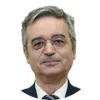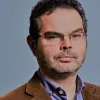Book traversal links for 1992-1993: A crise que veio de fora
Since joining the European Economic Community in 1986, Portugal had experienced a period of strong and prolonged economic growth.
When it joined the single market, the economy opened up, some sectors began modernising, a reprivatisation programme was launched, more European funds came in and the country invested in infrastructure.
Between 1987 and 1991, Aníbal Cavaco Silva led the first government to complete a full four-year term in office, creating conditions for economic policy and budget stability and contributing to an environment of economic growth.
This trend would be interrupted by the recession of 1992-1993. The dark clouds threatening the economy moved in from outside: the first Gulf War broke out in 1990 when Kuwait was invaded by Iraq, leading to armed intervention led by the USA.
The conflict led to an increase in oil prices and the United States went into a recession between 1990 and 1991.
Interest rates shoot up in Germany
Bundesbank discount rate (%)
The cost of German reunification
At the same time, the Eastern bloc in Europe was collapsing. The Berlin Wall came down in November 1989, paving the way for the reunification of the two Germanies, with the incorporation of the former German Democratic Republic into the Federal Republic of Germany.
The political process was swift, but there were economic costs. The considerable increase in German public spending, associated with building infrastructure in the east of the country, put pressure on inflation.
To control it, the German central bank proceeded to increase interest rates. Because other European currencies had their exchange rates pegged to the German mark, there was also an increase in interest rates in these countries, which contributed to a recession in the main European economies. With its main partners in a recession – particularly Spain and Germany, where most Portuguese exports were sent – the conditions were in place for Portugal to go into a recession as well.
Although this crisis arose mainly from an external source, internal policies played their part. The strong growth in the second half of the 1980s, as well as the devaluation of the escudo generated inflationary pressure in Portugal too. To combat this, a restrictive monetary policy was introduced, increasing interest rates and lifting capital controls. The country was getting ready for the Economic and Monetary Union, which would be enshrined in the Treaty of Maastricht, signed in February 1992.
At the same time, there was a restrictive fiscal policy with greater containment of the increase in state spending and investment in order to lower the government deficit.
GDP per capita
Economic growth was unable to withstand the effects of the external environment and the internal measures, giving rise to a recession. This recession began in the second quarter of 1992, following which time there was a continuous fall until the third quarter of the following year, when it reached its lowest point. At that time, the economy fell 1.1%.
Euros (€), chain-weighted, base year 2011
Unemployment rate
The unemployment rate began to climb even before the highest point of this business cycle was reached, in the first quarter of 1992. This trend continued beyond the recession period.
Economic Sentiment Indicator
The economic sentiment indicator reversed the trend before the recession began and fell sharply between the second quarter of 1992 and the third quarter of 1993.
Index Number (100 = May 1992)
The effects of this recession were felt in industrial production, reinforcing and extending a fall that was a long time coming, since the beginning of the decade. In early 1992, unemployment stood at less than 4% of the working population, increasing to more than 6% in 1994. In the second quarter of 1993, there was a fall in household consumption, which had already slowed down compared to the pace that had been seen before the recession.
Exports also suffered in a business cycle phase where the main external markets for Portuguese products and services were also in a recession and thus consumption volume was lower.
In the same way, the international recession led to a fall in investment, which was particularly evident in 1993.








